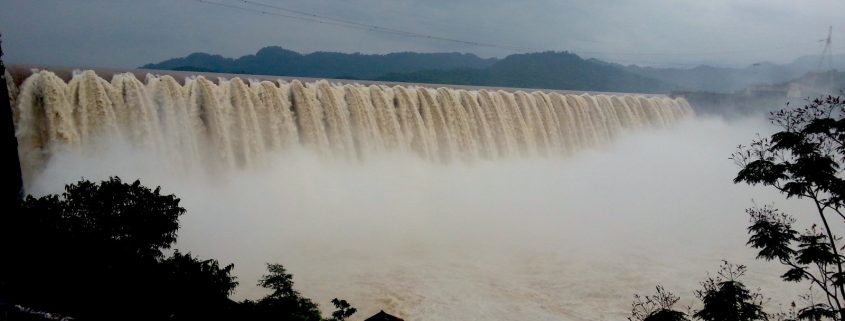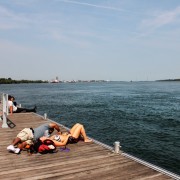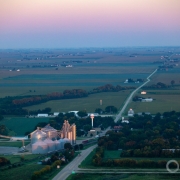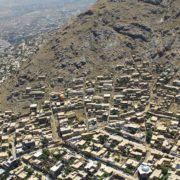World Bank Loan to India Leads to Water-Damaging Projects
Report finds that a generation after withdrawing big loan for hydro project the World Bank is back with indirect financing.
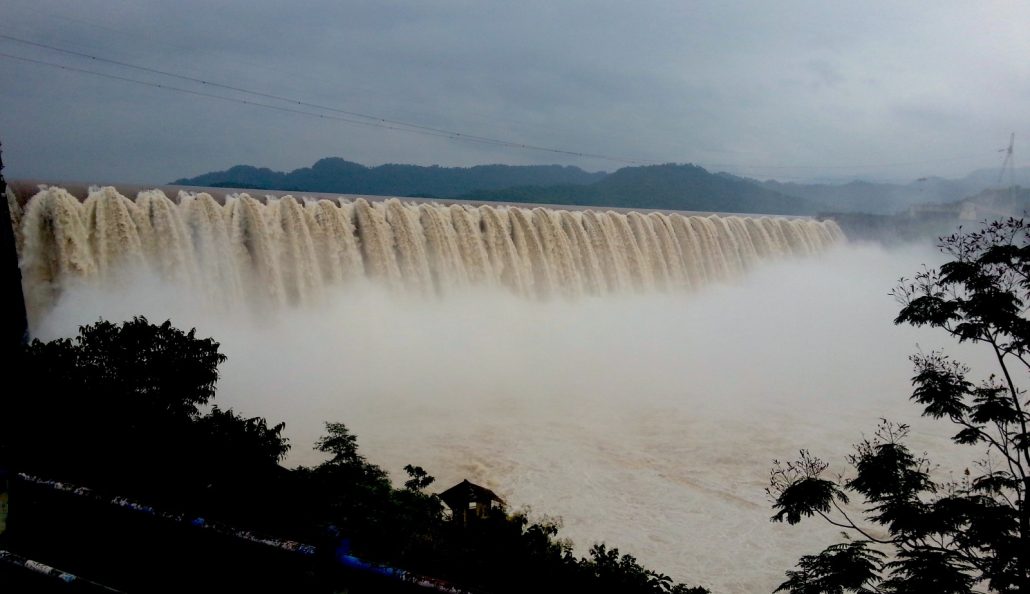
The Sardar Sarovar dam on India’s Narmada River has been source of civic conflict for decades.
By Keith Schneider
Circle of Blue
In the pantheon of public campaigns to block big hydropower projects around the world, the fight to stop the Sardar Sarovar dam in India belongs in the hall of distinction. The hydropower and water supply project proposed by the Indian government in the late 1970s, and financed in part by a $US 450 million World Bank loan, called for building a 80-meter tall (260 feet) curtain of concrete across the Narmada River, India’s fifth longest.
The dam’s design was tall enough to drown 37,000 hectares of farmland. It was stout enough to install 1,450-megawatts of electrical generating capacity. And it was brazen enough to compel tens of thousands of subsistence farmers, and an international coalition of human rights and environmental groups to battle the government from seizing private land. The resistance was so powerful that the World Bank withdrew its support in 1993, one of the first instances of public pressure that changed the lending practices of a big international development bank.
A new investigation of the World Bank’s lending practices in India, released this week by Inclusive Development International and four other advocacy groups, concludes that while the bank abandoned the Sardar Sarovar project, a separate World Bank unit called the International Finance Corporation (IFC) indirectly financed two newer dam projects on the Narmada River that damaged the environment and forced small farmers off the land. The indirect lending strategy is not unique to India, the report concludes.
“The IFC’s investments in India’s financial sector are part of a global pattern,” said the research groups in a statement. “Over the past decade, the IFC has increasingly outsourced its development funds to third parties in the financial sector, such as banks, private equity funds and insurance firms. After years of providing loans mostly to companies and projects, this represents a sea change in how the World Bank Group member does business. Yet as this portfolio has grown, the IFC has been consistently unwilling to take responsibility for the negative impacts.”
Pressure Mounts On Lenders
The report, Bankrolling India’s Dirty Dozen, is the latest investigation of development bank lending practices and their ruinous consequences to water, air, land, climate, and communities around the world. In November, an investigation by Columbia University researchers found that since 2009 the U.S. Export-Import Bank, a lending unit of the federal government, provided almost $US 34 billion in low-interest loans and guarantees to companies and foreign governments to build, expand, and promote fossil fuel projects around the planet. The investigators found that carbon emissions from the projects are so large they will erase the reductions in emissions achieved during the years of the Obama administration.
Earlier this month an investigation by Rainforest Action Network, the Dutch consultancy Profundo, and the Indonesian nongovernmental organization TuK found that big investment banks, including Credit Suisse and Bank of America, poured $US 43 billion in loans and underwriting to companies linked to deforestation and forest burning in Southeast Asia. More than a third of that sum comes from American, European and Japanese banks that developed sustainability pledges that are meant to conserve rainforests.
Last summer Food and Water Watch identified the 17 banks that loaned most of the money that financed the $US 3.8 billion Dakota Access Pipeline in North Dakota. Such investigations, intended to put a spotlight on lenders involved in resource-damaging projects, are changing investment patterns.
The Food and Water Watch disclosures prompted three lenders to divest their equity investments in Energy Transfer Partners, the pipeline’s primary manager. As the year ended the city of Seattle began to evaluate a proposal to withdraw the $US 3 billion it holds in accounts with Wells Fargo, a bank that provided a $125 million loan to build the pipeline.
Arabella Advisors, in a report this month, found that the movement by banks and investors to withdraw their equity investments from fossil fuel companies has accelerated and broadened. The institutions that have committed to divestment in carbon-based projects hold $US 5 trillion in assets now.
World Bank Is Focus of Interest
A substantial share of the interest in lending practices focuses on the World Bank, the second largest international development bank. Bankrolling India’s Dirty Dozen is the second report in Inclusive Development’s Outsourcing Development project to document the ecological and community effects of World Bank loans. The first report, released in October, found that the World Bank influenced loans that supported 91 very large, ecologically-damaging, and politically-divisive energy, mining, and agricultural projects around the world.
In its latest investigation, Inclusive Development and its four collaborators found that from 2005 to 2014, the World Bank’s International Finance Corporation invested $US 520 million in IDFC, an Indian infrastructure finance bank, and in five Indian commercial banks: ICICI, HDFC, Kotak Mahindra, Yes, and Axis.
As recipients of IFC funding, said Inclusive Development, “the six Indian banks are contractually required to apply the Performance Standards, the rules that aim to ensure that IFC investments do not cause unmitigated harm to people and the environment. The banks are essentially supposed to act as mini-IFCs, spurring socially responsible and environmentally sustainable investment. This is one of the IFC’s main justifications for financial intermediary lending: that it helps raise the bar on environmental and social governance and risk management throughout the financial sector.”
The bar for environmental performance, however, was not raised. The investigators found that the IFC loans leveraged tens of billions of dollars in spending by 12 industrial companies that Inclusive Development called “socially irresponsible.” Those companies built new mines, power plants, dams, and other infrastructure in and outside India that damaged water resources, forests, and communities, said the group, which is based in North Carolina. The study identified 56 other Indian companies or projects “implicated in serious harmful environmental impacts or abusive human rights practices that received funding from IFC intermediaries.”
“These findings aren’t just a moral outrage,” said David Pred, Inclusive Development’s managing director. “They are evidence that the IFC’s system for managing environmental and social risks in its $50 billion financial institutions portfolio is failing.”
In response to the Inclusive Development’s findings, IFC spokesman Frederick Jones issued this statement to Circle of Blue: “IFC is committed to working with financial intermediaries in India to help the private sector create opportunities by creating jobs, raising incomes, and reaching more than 100 million people who still don’t have access to basic financial services in a sustainable manner. We are reviewing the IDI report and will work with our clients to address the concerns raised in relation projects where our environmental and social standards apply.”
Two More Big Dams on Narmada River
Projects along the Narmada River, which flows east to west from its headwaters in Madhya Pradesh, received close attention in the study. After World War Two, the Indian government proposed to turn the free-flowing river into a mammoth water and electricity supply scheme to provide power to three Indian states, and fresh water to 17.8 million hectares (44 million acres) of irrigated crop land. The centerpiece of the project was the Sardar Sarovar dam.
The sheer scale of the dam, and the new era of water and power supply it was meant to herald, scared tens of thousands of small farmers and their families, and generated one of the most ardent environmental and human rights campaigns in modern Indian history. Big demonstrations against the dam following the start of construction in the late 1980s attracted international attention not only because of their size and energy but also because they focused to a great extent on pressuring the World Bank to withdraw its loan.
In 1993, the bank cancelled its financial commitment to the Sardar Sarovar dam. But the World Bank did not abandon the Narmada River.
Indian banks supported by the International Finance Corporation have invested $US 3.19 billion in financing to build hydropower projects in India. Two of them were built on the Narmada. In 2007, the 520-megawatt Omkareshwar dam was completed. It submerged approximately 30 villages, displaced some 50,000 people, and flooded thousands of hectares of natural forests. In 2015, the water level of Omkareshwar was raised by two meters (6 feet), submerging more land and houses.
Upstream from Omkareshwar, NHPC, India’s dam building company, constructed the Indira Sagar dam. The company “instituted a reign of terror, using special armed units to remove people from their homes. The company flooded villages without notice, forcing residents to flee for their lives,” said Inclusive Development.
Circle of Blue’s senior editor and chief correspondent based in Traverse City, Michigan. He has reported on the contest for energy, food, and water in the era of climate change from six continents. Contact
Keith Schneider

